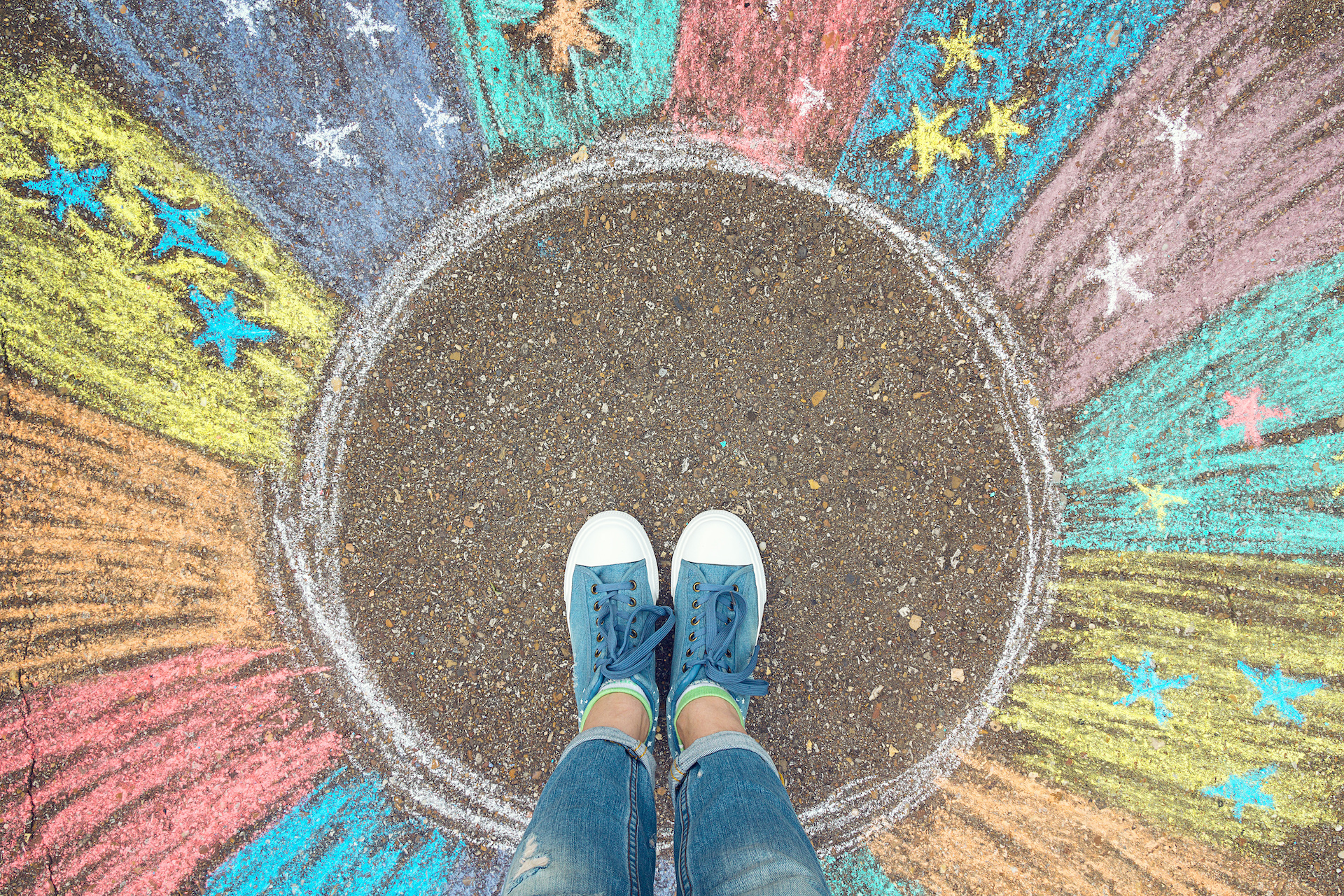Last week I had the pleasure of hosting a retreat with a circle of beautiful women in one of the most beautiful locations I’ve ever worked. The retreat centre was so beautiful and luxurious, in fact, that it wouldn’t have surprised me to see Oprah emerge from a room raving about her new favourite things. The women who’d flown me to Costa Rica for this retreat were warm, friendly, wise and strong. They clearly loved each other deeply and were willing to support each other through thick and thin. They’d been a small community for seven years already, meeting monthly for personal development conversations and yearly for a retreat with a facilitator/teacher like me. They knew each other’s stories, and had supported each other through death, divorce, family illness and everything in between. One night, when we sat together over drinks and a delicious meal, they each took turns describing the beauty and strength they saw in each other and it was one of the most moving things I’ve ever witnessed. When things are too beautiful though, there’s often a shadow lurking just beneath the surface. When I say there was a “shadow”, I’m not talking about an ugly meanness or pettiness that was being masked by so much kindness and love. No – I saw nothing that would suggest that their kindness and love for each other was anything other than genuine. The shadow was quite different from that. What was there beneath the surface (and which was acknowledged by the group toward the end of the first day) was a tendency they had to hold a SAFE space which sometimes kept them from being BRAVE. Because they cared so much for each other and were accepting and supportive of each other’s choices and paths through life, they were reluctant to ask each other hard questions or challenge unhealthy patterns when they saw them. They all wanted their community space to feel safe, but that safety was getting in their way of their growth and perhaps even their healing. (The added challenge, from my limited cultural perspective, is that, much like Canadians, Costa Ricans tend to err on the side of politeness. But politeness as a cultural value is often a way of masking the complexity that’s underneath.) When a space is too safe and we’ve become comfortable in that safety, we don’t want to challenge it, we don’t want to say anything that will rock the boat, and we don’t want to offend anyone else lest they abandon us. One of the results is that we become reluctant to be too vulnerable because our shadows might scare the other people away. We choose comfort over courage and we chase away or silence anyone who threatens that comfort. It wasn’t that these women wanted to be stuck in comfort. On the contrary – they are all brave and bold women who have accomplished remarkable things in their careers and families and they are in this community precisely because they WANT to grow and evolve. Growth does not scare them. Hard work does not scare them. Facing uncomfortable truth does not scare them. Quite the opposite – few groups have been more direct and courageous in ASKING me to help them see the shadow they had trouble seeing for themselves. What I witnessed was less of a desire to stay safe and more of an entrenched pattern that had become part of their way of co-existing. It was a pattern that was hard to see because they were too close to it. Like a piece of lettuce stuck between your teeth, some things are hard to see without a mirror. They’d brought me to Costa Rica partly because they recognized in me a potential mirror. Over the course of the second day, once we’d started to shine a light into the shadowy places, these women began to open up and share increasingly vulnerable and painful things – unresolved things, shameful things, trauma, fear, etc.. They also started to ask each other more challenging questions, inviting bravery, growth and new perspectives. In the evening of the second day, the pattern had shifted significantly and they were excited about what was possible with the new language and brave questions I’d offered. That evening’s conversation was vulnerable, openhearted, brave, and deep. During the course of our last evening together, they asked me to give direct feedback about what I’d witnessed in their group, what things they seemed to be afraid to talk about, where they were stuck, and how they could continue to grow. I was able to speak honestly because I knew these women had the strength to receive what I’d say without defensiveness, as well as the courage to take whatever I offered to heart. They didn’t need me to give them courage (they already had it in spades), they simply needed someone to help them see what was hidden from their view. What I witnessed among these women is not uncommon among communities, friendships, families, etc. where there is deep care and love. Sometimes we mistake “care” with “letting people stay comfortable in old patterns”. And sometimes we assume that holding space is only about providing safe space where a person feels free of judgement and free of the need to change or grow. Holding space, though, is much more complex than that. (Otherwise I wouldn’t have enough content for an 8 month course.) Now… I don’t want to give the impression that this is a binary thing – that a space is either safe or brave and that one is better than the other. That’s simply not true. For one thing, there are times when we need to be held in safety without any pressure to change our behaviour or our choices. Especially when healing from trauma or when deep in new grief, safety is paramount and should not be compromised. ALSO a feeling of safety is usually a first step in establishing enough trust so that we CAN step into bravery. A loving community like these women have provides the solid ground from which we can leap into courage. BUT at some point safety is not enough and sometimes it even creates a barrier to our growth. As I’ve said before, safety can become a trap and a crutch. In fact some people who cling to their own safety do harm to others in the process. (For example, in race relations or gender conversations when the dominant people in the room demand a “safe space” what they’re really asking for is allowances for their fragility. That fragility, left unchallenged, can cause great harm to the more marginalized in the room. When I work in those spaces, I make safety for marginalized people a greater priority than safety for those who’ve always assumed the privilege of safety.) If you find yourself in a community that has become too safe (and perhaps somewhat stagnant), here are some things that might help:
- Check-in about people’s readiness for more bravery. A community that’s thrust into bravery without preparation and/or discernment about their readiness can quickly become fractured beyond repair. Start with a hard conversation, revealing what you believe to be true about an over-reliance on safety, and ask people whether they feel emotionally stable enough to try something different. If most people are comfortable with the way things are, you may need to seek out another community to meet your needs. (Sometimes, on the other hand, when you’re establishing a new community where bravery needs to be built in, transparency around that expectation should be built into the way people are invited in. In my courses, for example, I include an indication of this expectation in the group agreements.)
- Build trust that can support bravery. If we don’t trust the people we’re with, it’s much more difficult to be brave in their presence. Trust-building involves keeping stories confidential, showing up when you promise to show up, being an engaged listener, withholding scorn, and being dependable. To build trust (and, consequently, bravery), people in the community need to be willing to be vulnerable and authentic with each other and to take off their masks so that others feel more safe to take off their masks.
- Invite an outsider to serve as the mirror. One of the things that really impressed me about this group was their openness to hearing what I was witnessing and their genuine desire to be nudged out of their comfort zones. An outsider (especially one who is skilled in community-building, facilitation and truth-telling) can offer a perspective that is nearly impossible to see from the inside. It can feel risky to let someone peer into your group’s shadows, and it can take some investment of time and money, but it can also be transformative. Be discerning, though, in who you invite in and how much you’ll allow yourselves to be disrupted.
- Invite the pink elephant into the room. One of my favourite ways of inviting the shadow to be revealed in a circle (and encouraging more bravery) is to use a pink elephant as a talking piece. (This is something that emerged out of a moment of inspiration and challenge in one of my team retreats and I credit Susan Dupuis for the idea.) When I pull out the pink elephant, I tell people that I have a sense that there’s something beneath the surface that people might be afraid to reveal, and then I pass it around the room and invite anyone who wants to share something to offer it to the group. A talking piece helps to slow down the conversation and keeps people from interjecting while tender things are being spoken.
- Practice asking braver questions. If people have indicated a readiness for brave space, then start by asking braver questions that invite new perspectives and growth. At the end of our time together in Costa Rica, the women had agreed that, when one shares a story that indicates they might be stuck in the safety zone, they’ll ask “are you ready for a brave question?” If the person says yes, they’ll offer something that will invite the person to see their story through a new lens. A brave question might be something like “What might change if you let go of this resentment?” or “How are you trying to protect yourself from pain?” or “Do you believe you’re worthy of more happiness?”
- Take care of each other. Stepping into bravery and vulnerability can leave us feeling tender and raw, and that’s a time when community support is even more necessary. If you are in a transition period with your community/family/partnership/etc., where you’re learning to be more brave, make sure you’re also setting aside extra time for play, self-care, group-care, and laughter. Eat meals together, go for walks in nature together, go dancing – anything that helps you to deepen your bond so that your container is strong enough to hold the bravery.
Not everyone is ready for bravery, and you may have some resistance in your group or family, but when the readiness is there, a brave space can bring transformation and growth that’s far beyond what’s possible in the comfort zone. Note: Thank you to the women who hired me for this retreat for giving me permission to share it. (originally published at heatherplett.com)

